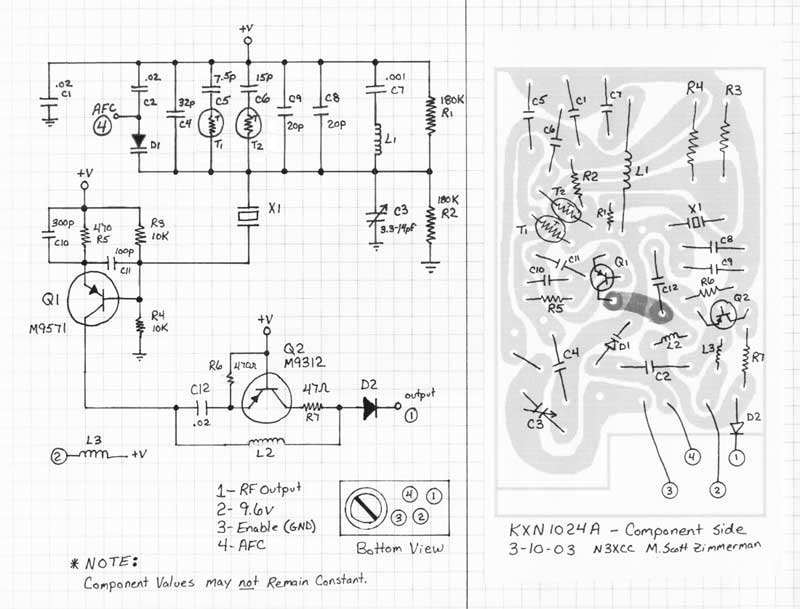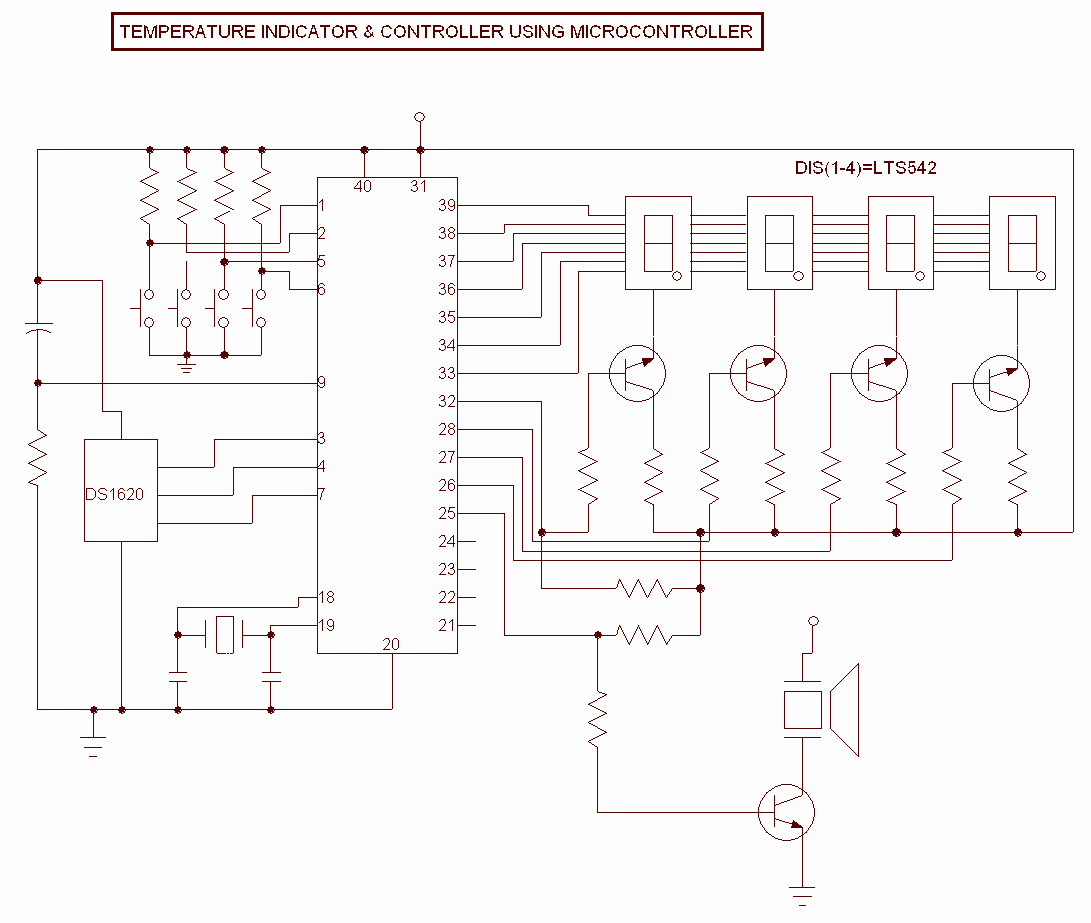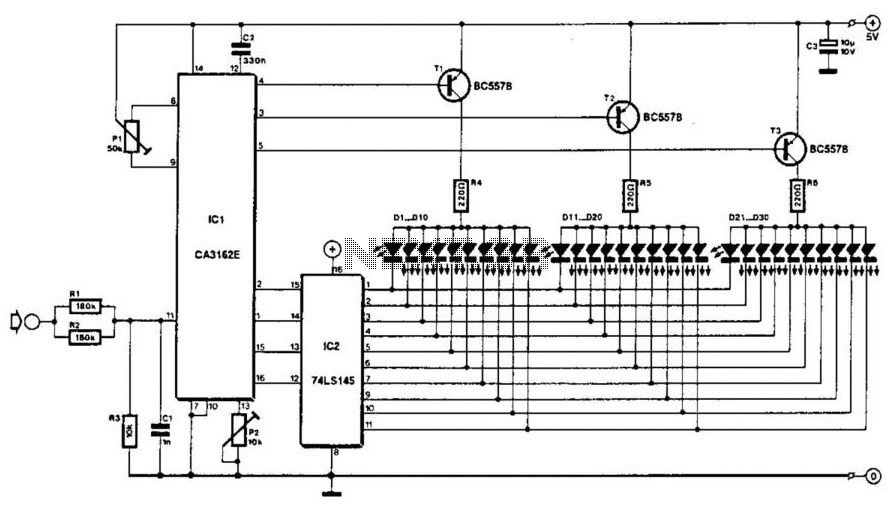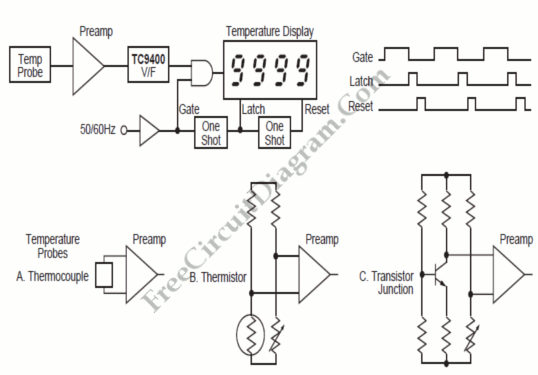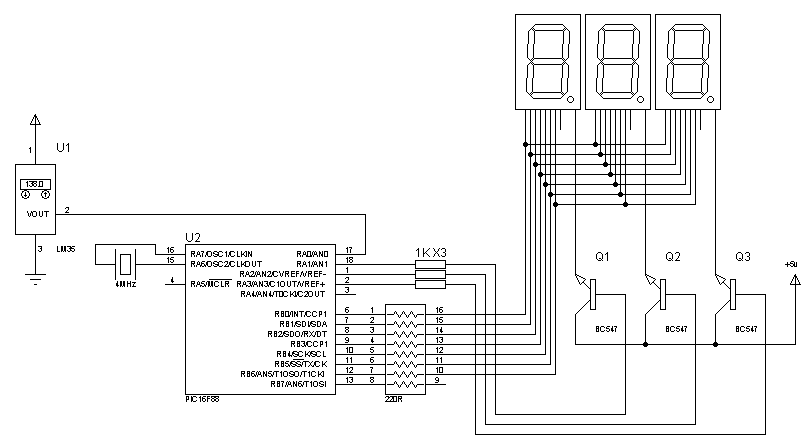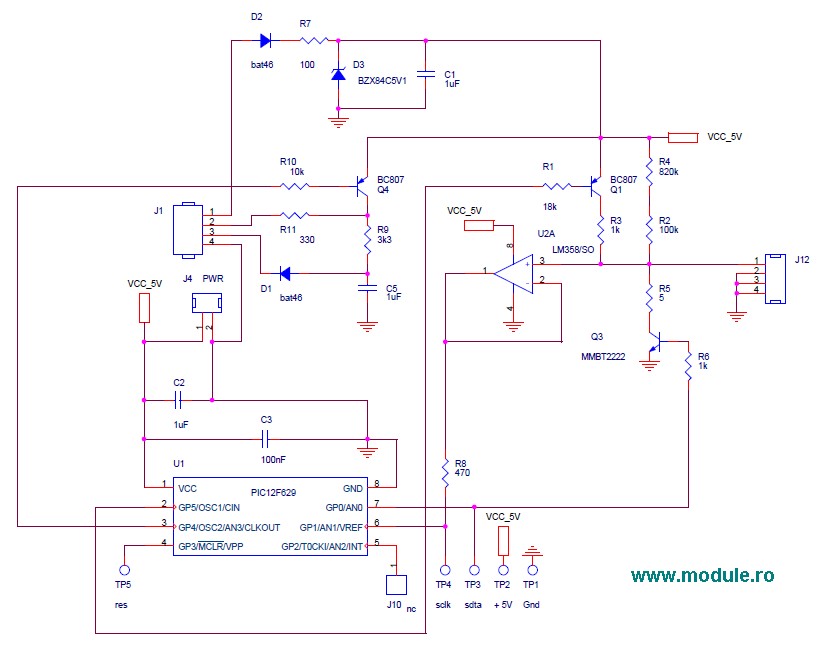
Digital Miscellaneous Temperature Gauge
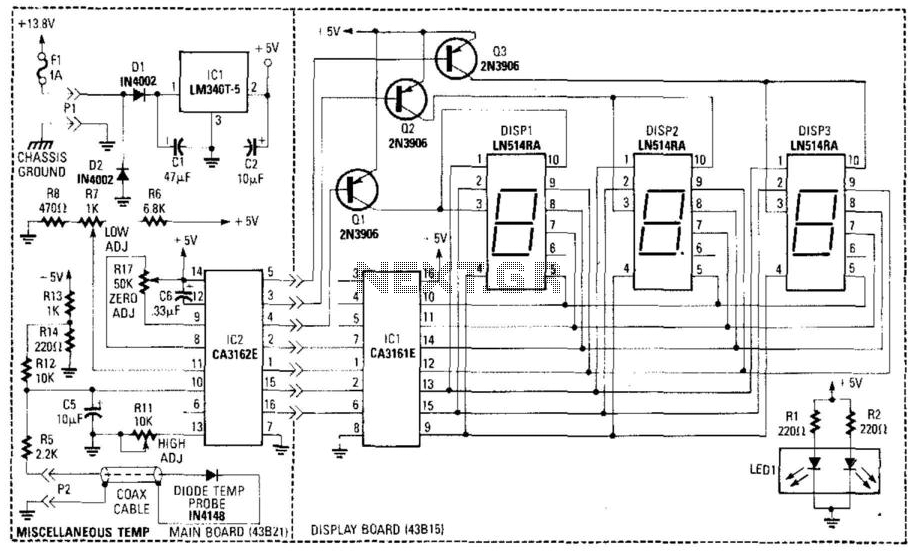
A diode (IN4148) is utilized as a temperature sensor. IC2 is an A/D converter with BCD output. A reference voltage set by R7 is applied to the positive input of IC2. As the temperature rises, the voltage across the temperature sensor resistance decreases. This results in an increase in the differential input voltage across pins 10 and 11 of IC2. R3 is used for low calibration adjustment. R17 is responsible for zeroing the A/D converter, while R7 is used for high calibration adjustment.
The circuit employs a diode, specifically the IN4148 model, as a temperature sensor due to its temperature-dependent forward voltage drop characteristics. As the temperature increases, the forward voltage drop across the diode decreases, leading to a change in the voltage across the sensor resistance. This change in voltage is critical for the operation of the A/D converter (IC2), which is configured to provide a Binary-Coded Decimal (BCD) output.
The reference voltage, established by resistor R7, is introduced to the positive input of IC2. This reference voltage serves as a baseline against which the voltage from the temperature sensor is compared. As the temperature rises, the decrease in the voltage across the diode sensor translates into an increased differential input voltage between pins 10 and 11 of IC2. This differential voltage is essential for accurate temperature readings and is directly related to the temperature being measured.
Resistor R3 is integrated into the circuit for low calibration adjustment, enabling fine-tuning of the lower end of the measurement range. This adjustment ensures that the output from the A/D converter accurately reflects the actual temperature at lower levels. Conversely, resistor R7 not only sets the reference voltage but also plays a crucial role in high calibration adjustment, allowing for precise scaling of the output.
R17 is included in the circuit to zero the A/D converter, ensuring that the output reads zero at a defined reference point, which is vital for accurate measurements. The combination of these components allows for a robust temperature sensing solution that can be calibrated for precision in various applications, making it suitable for environments where accurate temperature measurement is critical. A diode (IN4148) is used as a temperature sensor. IC2 is an A/D converter with BCD output. A refere nce voltage set by R7 is applied to the positive input of IC2. As the temperature increases, the voltage across the temperature sensor resistance decreases. This increases the differential input voltage across pins 10 and 11 of IC2. R3 adjusts low calibration. R17 zeros the A/D converter and R7 adjusts high calibration. 🔗 External reference
The circuit employs a diode, specifically the IN4148 model, as a temperature sensor due to its temperature-dependent forward voltage drop characteristics. As the temperature increases, the forward voltage drop across the diode decreases, leading to a change in the voltage across the sensor resistance. This change in voltage is critical for the operation of the A/D converter (IC2), which is configured to provide a Binary-Coded Decimal (BCD) output.
The reference voltage, established by resistor R7, is introduced to the positive input of IC2. This reference voltage serves as a baseline against which the voltage from the temperature sensor is compared. As the temperature rises, the decrease in the voltage across the diode sensor translates into an increased differential input voltage between pins 10 and 11 of IC2. This differential voltage is essential for accurate temperature readings and is directly related to the temperature being measured.
Resistor R3 is integrated into the circuit for low calibration adjustment, enabling fine-tuning of the lower end of the measurement range. This adjustment ensures that the output from the A/D converter accurately reflects the actual temperature at lower levels. Conversely, resistor R7 not only sets the reference voltage but also plays a crucial role in high calibration adjustment, allowing for precise scaling of the output.
R17 is included in the circuit to zero the A/D converter, ensuring that the output reads zero at a defined reference point, which is vital for accurate measurements. The combination of these components allows for a robust temperature sensing solution that can be calibrated for precision in various applications, making it suitable for environments where accurate temperature measurement is critical. A diode (IN4148) is used as a temperature sensor. IC2 is an A/D converter with BCD output. A refere nce voltage set by R7 is applied to the positive input of IC2. As the temperature increases, the voltage across the temperature sensor resistance decreases. This increases the differential input voltage across pins 10 and 11 of IC2. R3 adjusts low calibration. R17 zeros the A/D converter and R7 adjusts high calibration. 🔗 External reference
Warning: include(partials/cookie-banner.php): Failed to open stream: Permission denied in /var/www/html/nextgr/view-circuit.php on line 713
Warning: include(): Failed opening 'partials/cookie-banner.php' for inclusion (include_path='.:/usr/share/php') in /var/www/html/nextgr/view-circuit.php on line 713
